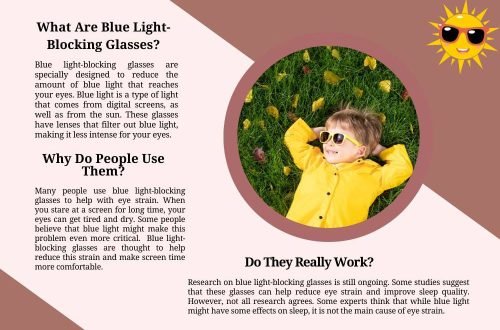Pillowcases for Hair Care | Types of Pillowcases

Pillowcases for Hair Care | Types of Pillowcases
Best Pillowcase for Hair Care | Types of Pillowcase
We take extra care of our hair when we are crazy for hair styles. Sometime, we do some mistakes unknowingly while adopting careful routines to look after our hair. One of mistakes is wrong pillowcase for hair. We sleep one fourth of our life on bed and we do not chose right pillowcase for hair. Our choice of pillowcase can significantly impact the health of our hair, particularly in preventing breakage. Let’s know about secrets behind pillowcases and uncover which ones are perfect for hair breakage.
Silk Pillowcases for Hair Care
Silk pillowcases have long been hailed as a game-changer for hair care. Their smooth, luxurious surface minimizes friction between your hair and the pillow, reducing the risk of breakage. Not only do silk pillowcases keep your hair looking fabulous, but they also contribute to smoother skin and lessens the appearance of wrinkles.
Satin Pillowcases for Soft Hair
Satin pillowcases, often mistaken for silk, offer similar benefits in terms of hair care. Although not as breathable as silk, satin pillowcases boast a soft texture that glides over the hair, preventing tangles and breakage. Additionally, satin pillowcases are typically more affordable than their silk counterparts, making them an attractive option for those on a budget.
Cotton Pillowcases for Preventing Hair Breakage
While cotton pillowcases may be the go-to choose for many due to their affordability and availability, they may not be the best option for preventing hair breakage. Cotton’s rough texture can create friction against the hair strands, leading to tangles, knots, and ultimately breakage. However, if cotton is your preference, opting for a high thread count can help mitigate some of these issues.
Bamboo Pillowcases for Sensitive Skin
Bamboo pillowcases have gained popularity in recent years, thanks to their sustainable and eco-friendly properties. In terms of hair care, bamboo pillowcases offer a soft and smooth surface that reduces friction, thereby minimizing hair breakage. Additionally, bamboo fabric is naturally hypoallergenic and antibacterial, making it an excellent choice for those with sensitive skin or allergies.
Microfiber Pillowcases for Hair Health
Microfiber pillowcases are engineered to mimic the softness and smoothness of natural fibers like silk and satin. These synthetic pillowcases are often lauded for their affordability and durability. While they may not offer the same luxurious feel as silk or satin, microfiber pillowcases provide a smooth surface that helps prevent hair breakage and maintain hair health.
Linen Pillowcases for Sleeping Lovers
Linen pillowcases are prized for their breathability and moisture-wicking properties, making them ideal for hot sleepers or humid climates. While linen may not be as smooth as silk or satin, it still offers a relatively gentle surface that reduces friction and minimizes hair breakage. Additionally, linen pillowcases are known for their durability, becoming softer and more comfortable with each wash.
Flannel Pillowcases for Cold Weather
Flannel pillowcases are beloved for their warmth and coziness, particularly during the colder months. However, their brushed texture can be too abrasive for delicate hair strands, leading to increased friction and potential breakage. If you can’t resist the allure of flannel, consider using a silk or satin hair wrap to protect your locks while you sleep.
Which Pillowcases is Perfect to Prevent Hair Breakage?
When it comes to selecting the perfect pillowcase to prevent hair breakage, silk and satin emerge as the clear winners. Their smooth surfaces minimize friction, reduce tangles, and help maintain the integrity of your hair. While other materials like cotton, bamboo, microfiber, linen, and flannel have their merits, they may not offer the same level of protection against breakage.
Conclusion
Choosing the right pillowcase for hair care is a small yet significant step towards achieving healthier, happier hair. By opting for silk or satin pillowcases, you can minimize friction, reduce breakage, and wake up to smoother, more manageable locks. Remember to prioritize comfort, breathability, and hair care when selecting your perfect pillowcase.
FAQs about Pillowcases
How often should I wash my silk pillowcase?
It’s recommended to wash your silk pillowcase at least once a week to remove oils, dirt, and bacteria that can accumulate over time.
Can silk pillowcases help with frizz?
Yes, silk pillowcases can help reduce frizz by preventing friction and static buildup, resulting in smoother, more manageable hair.
Are satin pillowcases suitable for all hair types?
Satin pillowcases are suitable for most hair types, including curly, straight, and textured hair. However, individuals with extremely oily hair may find satin pillowcases less effective due to their smoother surface.
Do bamboo pillowcases shrink after washing?
Bamboo pillowcases may shrink slightly after the first wash, but this can usually be minimized by following the manufacturer’s care instructions.
Can microfiber pillowcases cause acne breakouts?
While microfiber pillowcases are less breathable than natural fibers like silk and satin, they are generally considered safe for acne-prone skin. However, it’s essential to wash your pillowcase regularly to prevent oil and bacteria buildup.
Do linen pillowcases get softer over time?
Yes, linen pillowcases tend to become softer and more comfortable with each wash, making them an excellent long-term investment for both hair and skin health.


You May Also Like

Are Blue Light-Blocking Glasses Beneficial for Eye Health?
22/07/2024
Drinks For Summer to Beat the Heat
03/04/2022